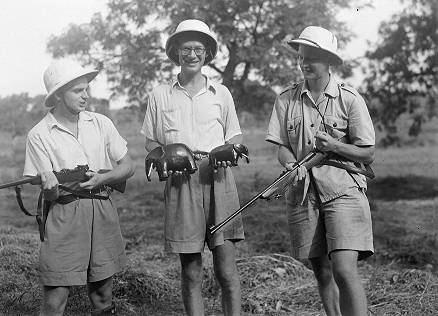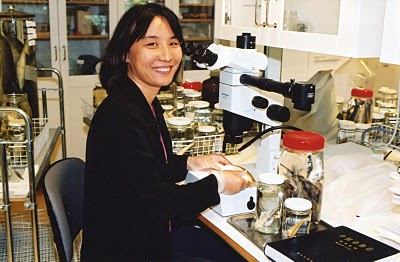My former superviser, Alf G. Johnels, passed away on 24 May, 2010, at age 93.
Alf has a long and interesting professional record, crowned by his professorship at the Department of Vertebrate Zoology at the Swedish Museum of Natural History (1958-1982), and his presidency of the Royal Swedish Academy 1981-1983. He was also a key person in the discovery of mercury poisoning in Sweden in the 1960s, which laid the foundation for advanced ecotoxicology. By analyzing bird feathers in museum collections, Alf and collaborators could show that mercury poisoning in birds coincided with the introduction of methyl mercury as a pesticide. This led to the establishment of a biobank at the Swedish Museum of Natural History in which samples are preserved under sterile conditions, and which will enable the study of time series of toxic substances in the environment.
More important for us, however, is Alf’s ichthyological career. It started in early childhood, and led him to become a fisheries biologist first — to be certain of a fallback — but he also studied lamprey anatomy at the Zootomical Institute (now Department of Zoology) of the Stockholm University where he obtained his PhD in 1948. Those were the days when anatomy was important, and every biologist knew the name of every cell and every structure inside an animal, and the Zootomical Institute had several world renowned researchers of the kind. Alf and others in Stockholm were very much interested in the early development of fishes, as a way to understand the formation of organs in adult fish. The one major field trip Alf made had as objective to sample ontogenetic series of various “primitive” fishes, principally lungfish and bichirs.
Together with Ragnar Olsson and Björn Afzelius he travelled to the Gambia in 1950, staying there from May till November. This was long before the Gambia became a tourist spot. The trio settled in Bansang, in the middle of a swampy area full of lungfish and bichirs. They searched out nests of these species, and took out and preserved some eggs, later larvae, about every day. They also collected other fish, of course, and together with the material from an earlier expedition in 1932, the University built up a significant collection of Gambian fishes. The collection is now in the Swedish Museum of Natural History. The team also took back quite a number of living fishes, and some of the smaller species entered the aquarium trade in Stockholm for a while.
In 1954 Alf produced a descriptive catalog of the collections made at Bansang, in which he described three new species, Pellonula afzeliusi, Syngnathus olssoni, and Barbus svenssoni. Unfortunately, they are all synonyms. Chrysichthys johnelsi, named after himself by Daget, is however still a valid species. He also produced a small paper about the scales of Gambian fishes, showing that in the low water/dry period, the scales are eroded at the margin.
After retirement, Alf had time to devote to his main passion, salmon fishing, going fishing ever so often to Norway and returning empty-handed. One of his last works was a descriptive catalog of the salmon rivers of southern Norway. Nevertheless, he kept coming to the museum every day till just a few years ago when his health conditions became preventive.
Alf was a very special person, always neatly dressed, always a bowtie on, always well articulated on any subject of science. His mind wasn’t as conventional as his dress, and he described himself as more of an engineer than a scientist. It is well remembered when he helped us fishing stone loaches — dressed in suit, and using his umbrella as fishing gear.
References
Johnels, A.G. 1954. Notes on fishes from the Gambia River. Arkiv för Zoologi, 6: 327-411.
Berg, W., A. Johnels, B. Sjöstrand & T. Westermark. 1966. Mercury content in feathers of Swedish birds from the past 100 years. Oikos, 17: 71-83.

